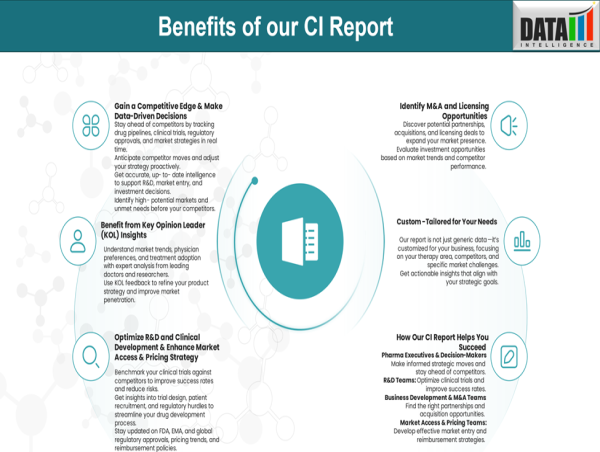Download PDF Sample Report: https://www.datamintelligence.com/strategic-insights/sample/mucopolysaccharidosis-type-i-mps-i-treatment-revolution-the-role-of-innovative-gene-therapy-in-addressing-unmet-needs
Understanding the MPS I Disease Continuum
MPS I spans three clinical subtypes: Hurler syndrome (MPS-IH), Hurler-Scheie syndrome, and Scheie syndrome. Hurler syndrome is the most severe form, typically presenting in infancy with features such as skeletal abnormalities, hepatosplenomegaly, progressive neurocognitive decline, and cardiac involvement. The intermediate and milder forms show more attenuated disease progression, yet remain life-altering. Regardless of subtype, early diagnosis is essential, as irreversible damage can occur even within the first few years of life.
Epidemiology Snapshot
MPS I is classified as an ultra-rare disorder, with an estimated incidence of approximately 1 in 100,000 live births. The condition affects all ethnic groups equally and has no gender predilection due to its autosomal recessive inheritance pattern. While screening efforts are expanding in newborn programs globally, delayed diagnosis remains a major barrier in resource-constrained settings.
Current Standard of Care: Strengths and Shortcomings
Since its FDA approval in 2003, Aldurazyme (laronidase) has been the cornerstone of treatment for MPS I. This enzyme replacement therapy (ERT), administered via weekly intravenous infusions, has shown clear benefits in reducing hepatosplenomegaly, improving pulmonary function, and enhancing mobility in patients with moderate to severe somatic symptoms.
However, Aldurazyme’s clinical limitations are just as significant:
- No CNS Penetration: The blood-brain barrier (BBB) effectively blocks ERT from accessing brain tissue, leaving neurodegeneration unchecked in patients with Hurler syndrome.
- High Treatment Burden: Weekly infusions demand significant time and healthcare resources, affecting patient quality of life and caregiver burden.
- Economic Considerations: With annual treatment costs ranging between $200,000 and $500,000, the therapy is reimbursed primarily through orphan drug frameworks, yet lacks long-term economic sustainability.
For patients with severe disease and risk of CNS involvement, stem cell transplantation (SCT)-usually hematopoietic stem cell transplant (HSCT)-remains the only curative option. But it carries risks such as graft-versus-host disease, infection, and mortality, making it suitable only for a subset of patients.
Pipeline Momentum: What’s on the Horizon?
The pipeline for MPS I is brimming with innovative approaches, primarily in the realms of gene therapy and next-generation biologics. These candidates aim to overcome current treatment constraints and reimagine what disease control-or even reversal-could look like.
Gene Therapies
Several gene therapy candidates are under clinical evaluation, leveraging adeno-associated viral (AAV) vectors or hematopoietic stem cell (HSC) editing techniques to introduce functional IDUA genes. The goal is to offer single-dose, lifelong expression of the missing enzyme-especially in tissues shielded by the BBB.
CNS-Penetrant ERTs
New approaches using receptor-mediated transport systems (such as transferrin or insulin receptors) or fusion proteins are being tested to deliver enzymes across the BBB. These strategies aim to replicate systemic benefits while addressing cognitive decline and behavioral regression.
Key Target Profiles Include:
- CNS efficacy combined with systemic disease control
- Monthly or one-time dosing to reduce treatment burden
- Non-invasive or targeted administration methods (e.g., intrathecal, IV with BBB-penetrant tags)
- Lower immunogenicity and enhanced durability
- Biomarker-guided efficacy for early response tracking
Market Dynamics: The Battle for Differentiation
With Aldurazyme’s legacy position and Sanofi’s global reach, newcomers must present a clear and compelling value proposition to secure market access. The pressure is on for pipeline developers to demonstrate clinical superiority and health economic advantage-especially as pricing scrutiny around orphan drugs continues to intensify.
Key Strategic Insights:
- First-mover advantage in CNS-active therapies could shift treatment algorithms entirely.
- Durability of benefit-especially in gene therapy-must be proven through long-term follow-up data to win regulatory and payer confidence.
- Health economics will be central. With gene therapy likely priced above $1 million per dose, outcomes-based reimbursement models are expected.
- Real-world evidence (RWE) will play a critical role in assessing long-term efficacy, safety, and patient adherence post-approval.
Ideal Therapy Blueprint: Target Opportunity Profile (TOP)
To unseat Aldurazyme as the standard of care, a new therapy must offer meaningful advancements across several fronts:
- Mechanism: CNS-active gene therapy or BBB-penetrant enzyme replacement
- Efficacy: Clear evidence of neurocognitive protection and somatic symptom improvement
- Safety: Fewer immune responses and lower risk of vector toxicity
- Patient Experience: Less frequent dosing, ideally monthly or one-time
- Economic Justification: Justifiable high cost via demonstrable long-term outcomes
Book Your CI Consultation Call: https://www.datamintelligence.com/strategic-insights/ci/mucopolysaccharidosis-type-i-mps-i-treatment-revolution-the-role-of-innovative-gene-therapy-in-addressing-unmet-needs
Final Thoughts
As the rare disease therapeutic space undergoes a profound transformation, MPS I serves as a key bellwether. The stakes are high-not only in terms of market potential but in the lives of patients whose futures depend on therapies that go beyond prolonging life to preserving the quality of it.
While Aldurazyme paved the way, its limitations have left a clear unmet need. Emerging treatments targeting the CNS, offering reduced treatment frequency, and incorporating novel delivery mechanisms are now poised to redefine the future of MPS I care. Stakeholders-patients, caregivers, clinicians, and innovators-are watching closely as this new chapter unfolds.
Read Related CI Report:
1. Spinal Muscular Atrophy Genetic Understanding Disease Modifying Therapies
2. Retinal Vein Occlusion | Competitive Intelligence
Sai Kumar
DataM Intelligence 4market Research LLP
+1 877-441-4866
email us here
Visit us on social media:
LinkedIn
X
Legal Disclaimer:
EIN Presswire provides this news content "as is" without warranty of any kind. We do not accept any responsibility or liability for the accuracy, content, images, videos, licenses, completeness, legality, or reliability of the information contained in this article. If you have any complaints or copyright issues related to this article, kindly contact the author above.
![]()





